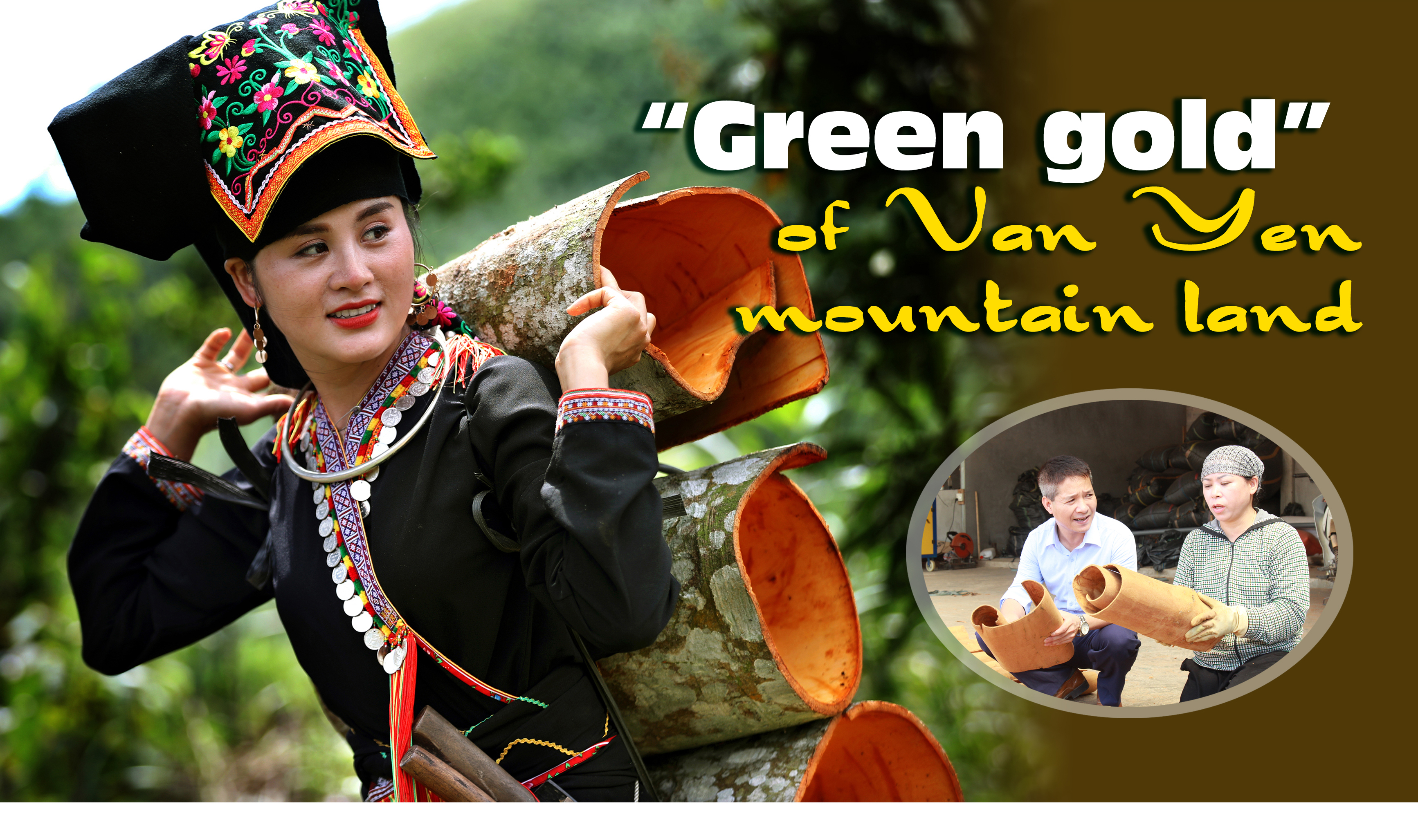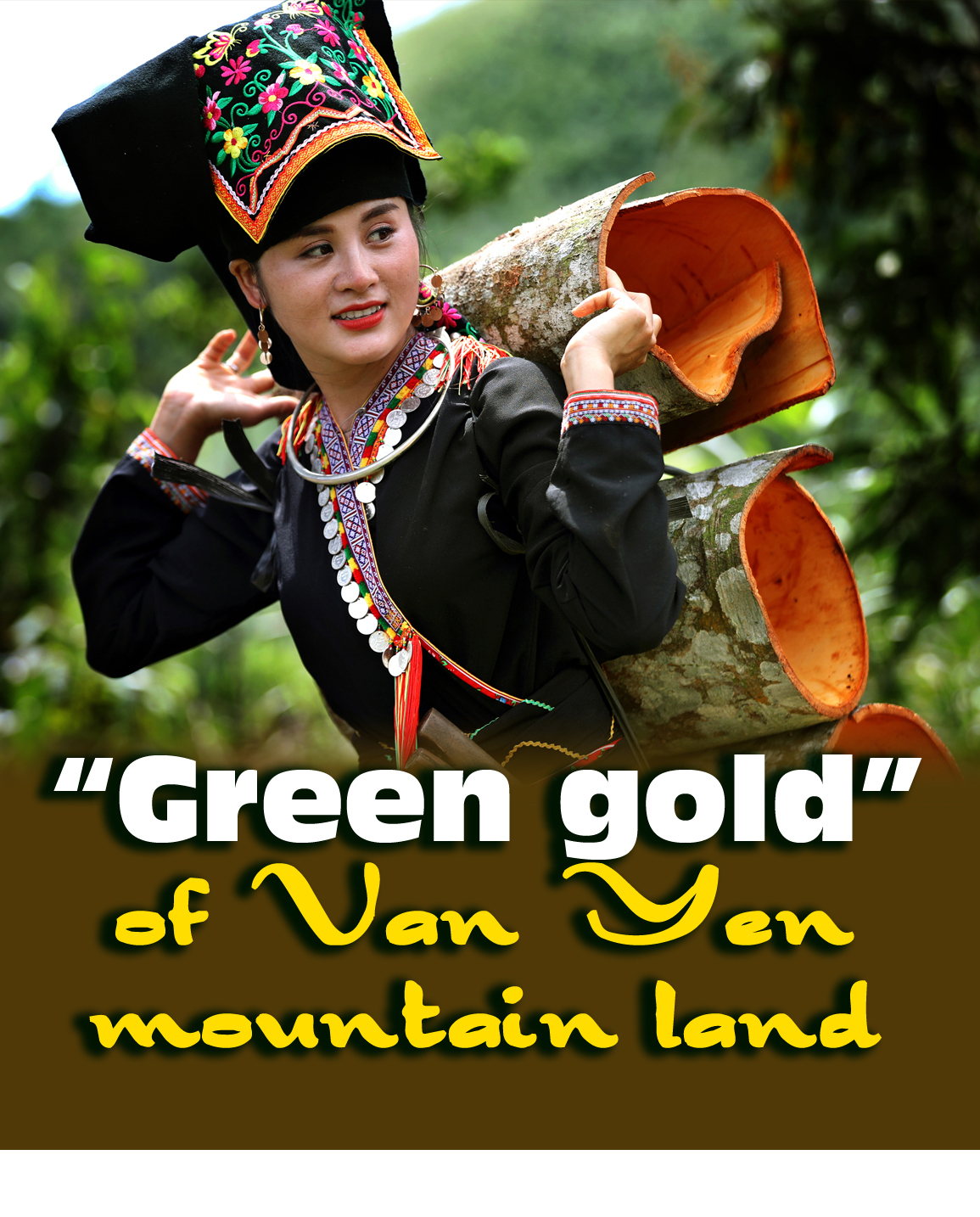Cinnamon is considered a "green gold" tree contributing to sustainable poverty reduction by the Dao people in Van Yen district (Yen Bai province) and is also the district’s key plant for economic development.

Visiting Van Yen district, Yen Bai province, the most impressive thing to people is the cinnamon tree. Cinnamon can be found everywhere; every house has cinnamon. The cinnamon tree seems to enter not only the material life but also the spiritual life of the Van Yen people. Rarely do people grow as much cinnamon as in Van Yen. From the deep valley to the high mountainsides, wherever you set foot, you will see overlapping cinnamon hills.
In the land of Vien Son, which is considered the ancestral land of the cinnamon tree, the villagers also built a communal house to worship the person who discovered the cinnamon tree and taught the villagers how to plant and care for it. The communal house, called Thap Cai, is located among the immense cinnamon hills. In the communal house, large pieces of cinnamon bark from ancient cinnamon trees and handicraft products made from cinnamon are solemnly arranged by the people.
Mr. Ly Tien Thanh, Secretary of Thap Cai Village, said: When talking about cinnamon trees, it is mandatory to remember Mr. Ban Phu Sau, the first person to find them, plant them, and teach people how to plant and care for them. The villagers call him Father of the Cinnamon Tree.
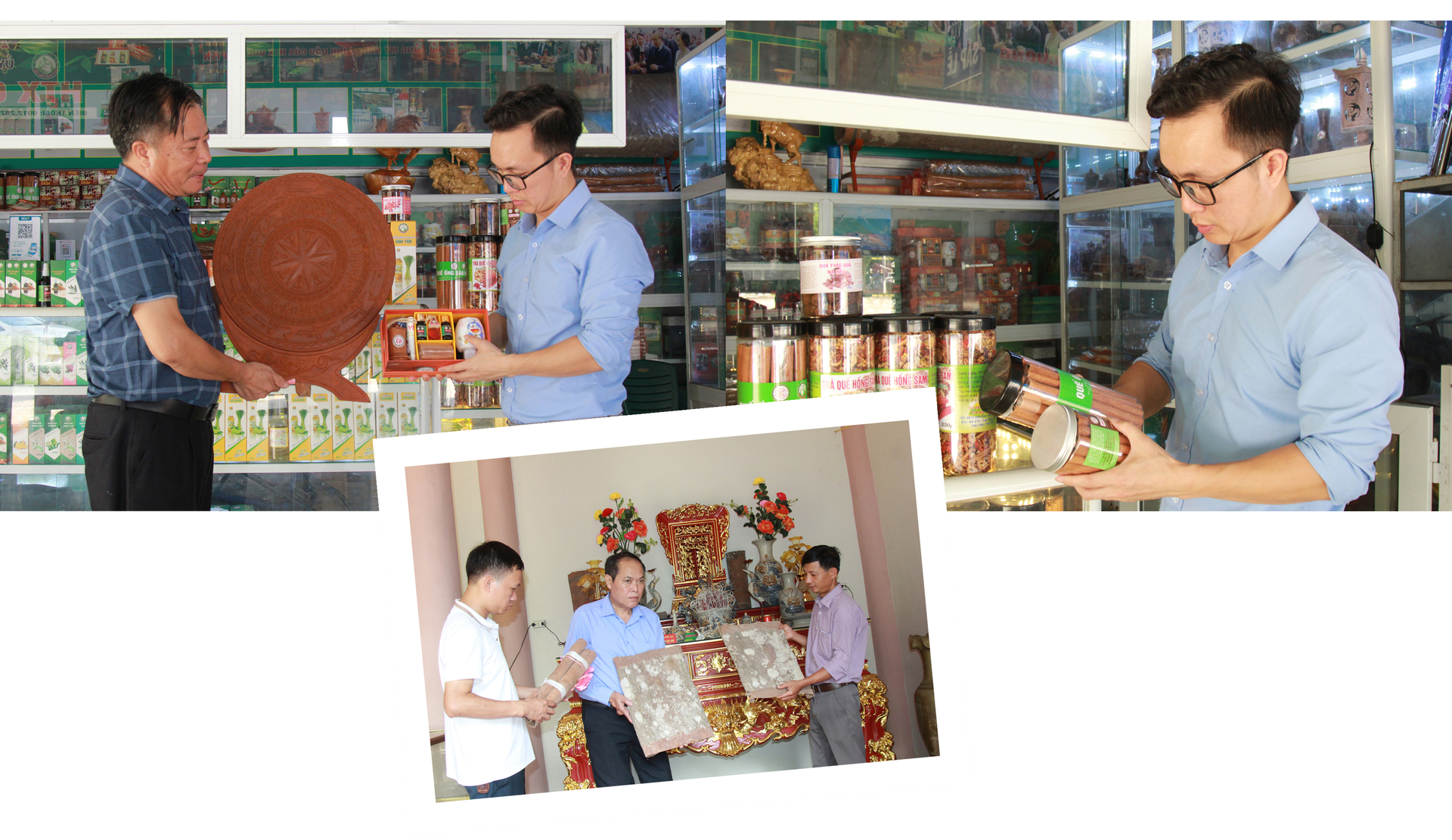
Mr. Ban Phu Sau was one of the first people to bring his family back to explore and settle in Vien Son. Once he went into the forest to hunt, he chased a deer into the deep forest and saw a big tree with many fruits. On the tree, there was a flock of birds that were eating the fruits. Coming closer to the strange tree, he saw a fragrant smell emitting from the tree. He tried eating a leaf and found that it had a sweet, spicy taste and a strong aroma.
He brought a small tree and planted it next to the house for shade. In the following years, the tree grew and produced many fruits. He planted the seeds around the house and on the fields, and he campaigned and taught the villagers how to plant. At first, people only used this plant for medicine and spice. After a while, many lowland people came to buy cinnamon bark and took it everywhere to make medicine and spice. Seeing that the strange tree not only cures diseases but also brings income, the villagers planted it all over the mountains and hills and called it "Phinh Gia Hua" in the Dao language (the ancestors’ tree), later called cinnamon, and it was grown more and more by the Dao people and other ethnic groups in the region.
Over more than 200 years, Thap Cai communal house still exists and sticks with the Dao community in Vien Son land. Every year, people in the commune organize festivals associated with spiritual formalities and offer the most unique products made from the cinnamon tree to the communal house.


Vien Son is a highland commune in Van Yen district, with over 900 households and more than 3,800 people, of which the Dao people account for 75%. The cinnamon tree has been faithfully attached to the Dao people in Vien Son, from their thoughts and memories to their daily lives and productive labor. Over many generations, the Dao people in Vien Son commune still consider cinnamon a staple crop and one of the main sources of income.
Mr. Ban Phuc Hin, Chairman of the Commune People's Committee, shared: Currently in the commune, there are many tycoons who own large cinnamon forests close together from hill to hill. Small households have a few hectares, and large households have dozens of hectares. Currently, many households have an income of several hundred million to billions of dongs each year. Here there are cinnamon forests with elderly “cinnamon great grandparents," 40–50 cm in diameter, with the bark that had turned yellow-brown. Walking under the endless green cinnamon forests and admiring the spacious houses, you will understand why the Dao people consider cinnamon trees a "green gold" store.
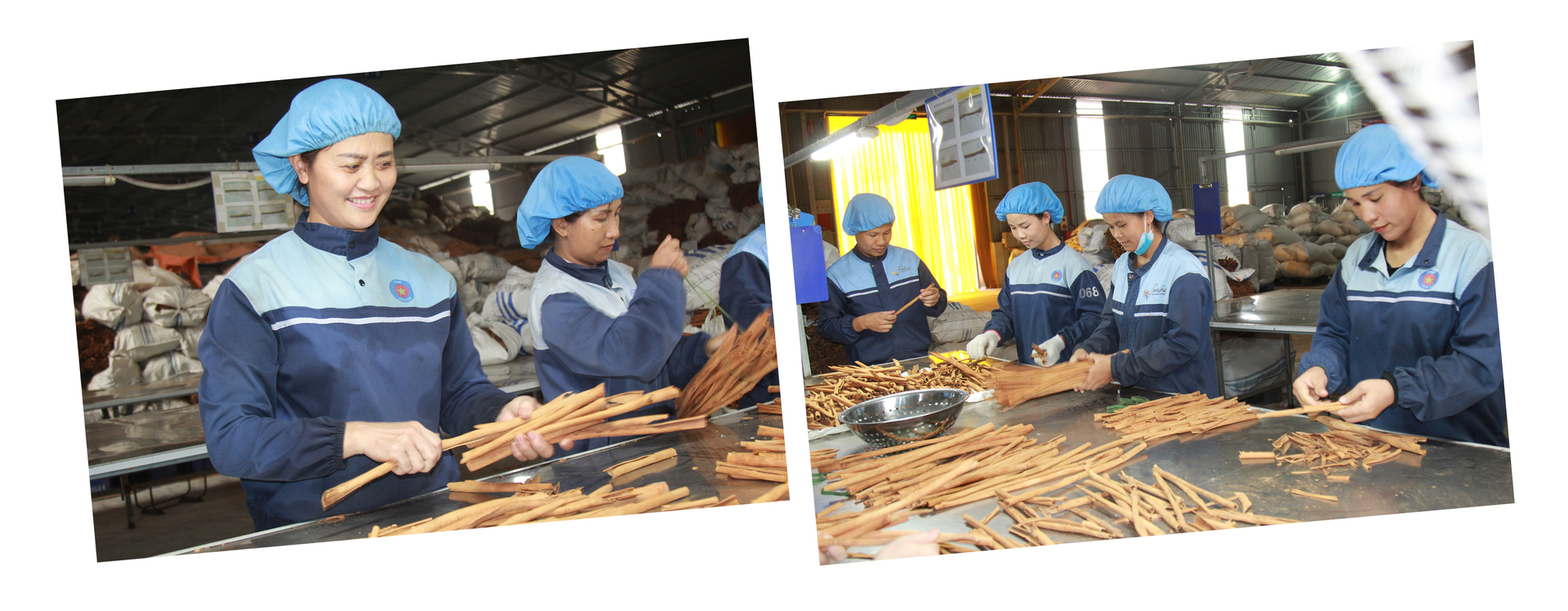
In the 1960s of the last century, in Vien Son, there were two famous cooperatives for cinnamon production and processing, namely Cong Tam and Cong Luc Cooperatives. In particular, six Dao villages belonging to the Cong Luc Cooperative were awarded the title of Labor Hero by the State at that time thanks to their achievements in developing cinnamon areas.
As of now, Vien Son commune has developed the cinnamon area to nearly 2,500 hectares. Each year, people sell to the market over 600 tons of cinnamon bark, more than 4,000 m3 of cinnamon wood, and hundreds of tons of essential oil, earning an income of nearly VND 50 billion. By 2021, Vien Son highland commune had been recognized as meeting new rural standards by Yen Bai province. Since 2010, the Vien Son cinnamon area and seven communes in the cinnamon raw material planning area of Van Yen district have been granted geographical indication protection certificates by the Intellectual Property Office of Viet Nam (Ministry of Science and Technology). Van Yen district has the largest cinnamon region in the country, with the cinnamon variety that is considered the best and has a high essential oil content.

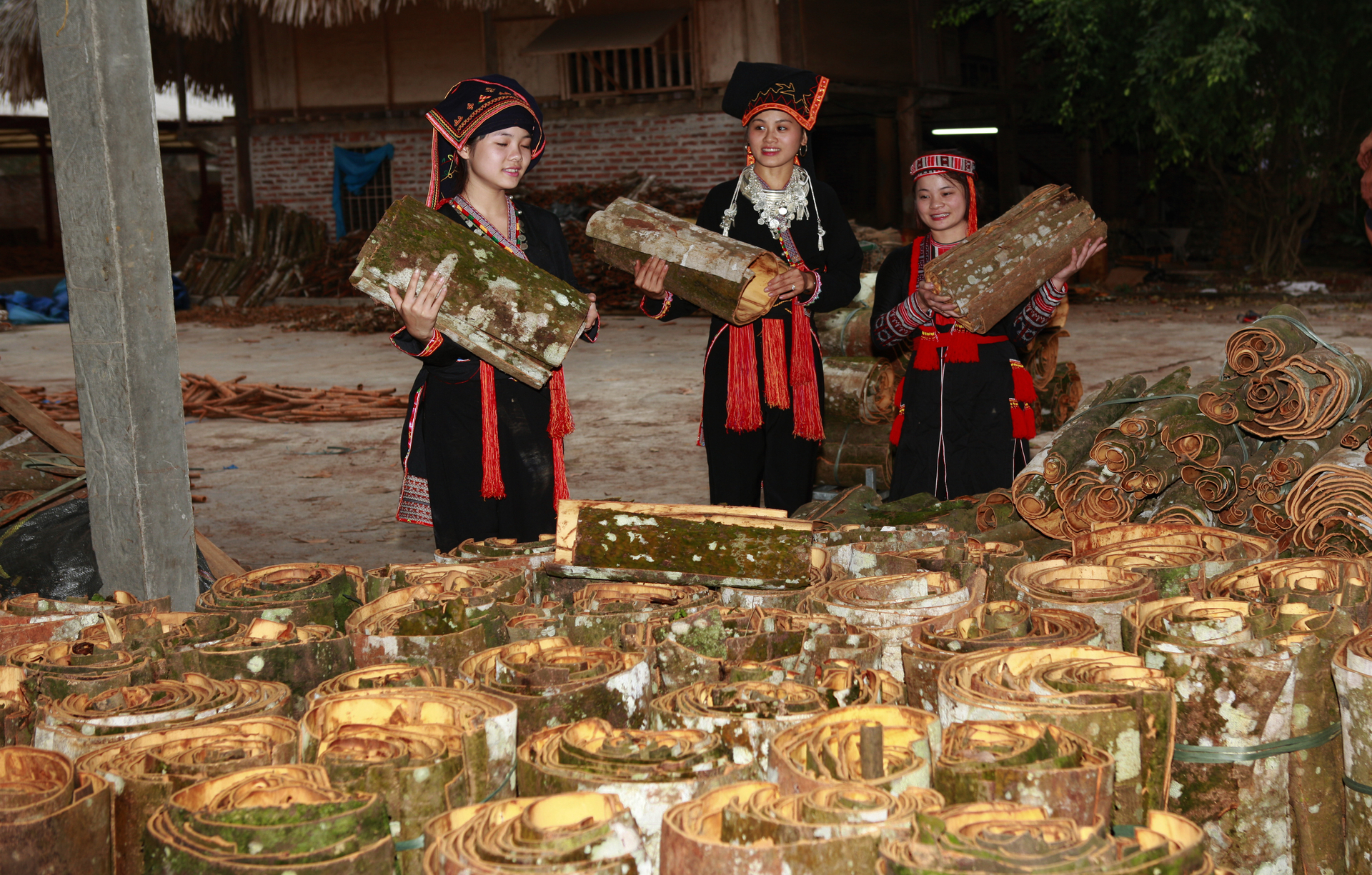
Van Yen is the largest cinnamon granary in Yen Bai province. Growing in the pure, fresh air and enjoying specific soil conditions, Van Yen cinnamon is considered "the first Cao Son Ngoc Que" in Yen Bai in particular and the whole country in general. For a long time, cinnamon has become a familiar crop, bringing a comfortable life to people from generation to generation.
Overcoming the ups and downs and fluctuations of the market mechanism, the Van Yen cinnamon tree steadily develops in the direction of producing goods, improving economic efficiency, and improving the ecological environment. Currently, Van Yen cinnamon trees are grown in all 25 communes and towns of the district, with a total area of more than 55,000 hectares, of which the concentrated cinnamon area is over 30,000 hectares. The area of cinnamon that has been set as a geographical indication is located in eight communes on the right bank of the Red River, including Vien Son, Phong Du Thuong, Phong Du Ha, Xuan Tam, Chau Que Ha, Tan Hop, Dai Son, and Mo Vang.
In order to obtain quality cinnamon raw material areas, selecting seedlings is the most important step. The indigenous cinnamon tree in Van Yen is assessed to have precious genetic resources, the best quality, and a high essential oil content. However, previously, in some communes, many cinnamon trees died after planting or were infected with pests and diseases and did not develop well. The reason is that because people buy seedlings sold in the market or from other localities to plant, the quality of the seedlings is not guaranteed.

Mr. Nguyen Van Quyen, Deputy Head of the Van Yen Department of Agriculture and Rural Development, said: To preserve the high-quality cinnamon seed sources for production, the district's agriculture sector has reviewed and localized areas of ancient cinnamon trees (tree age of 30 or more) to plan them into high-quality seed forests.
On average, each ancient cinnamon tree yields 20–30 kg of seeds/year, meeting the needs of planting seeds for 20–30 hectares. Every year, the district supplies localities inside and outside the province with nearly 50 million cinnamon seedlings. This is a high-quality seed source, not only provided to people in the district but also sold to other localities.
In order to enhance the position and value of cinnamon trees, in addition to attracting establishments and businesses to process essential oil and process cinnamon bark into many products for export, Van Yen district is currently aiming to develop the handicraft industry from cinnamon trees with specific solutions. These solutions include vocational training in producing handicrafts from cinnamon bark for workers in key cinnamon communes and areas; promoting and introducing the cinnamon tree and handicraft products from cinnamon at fairs inside and outside the province with hundreds of products made from cinnamon, etc.
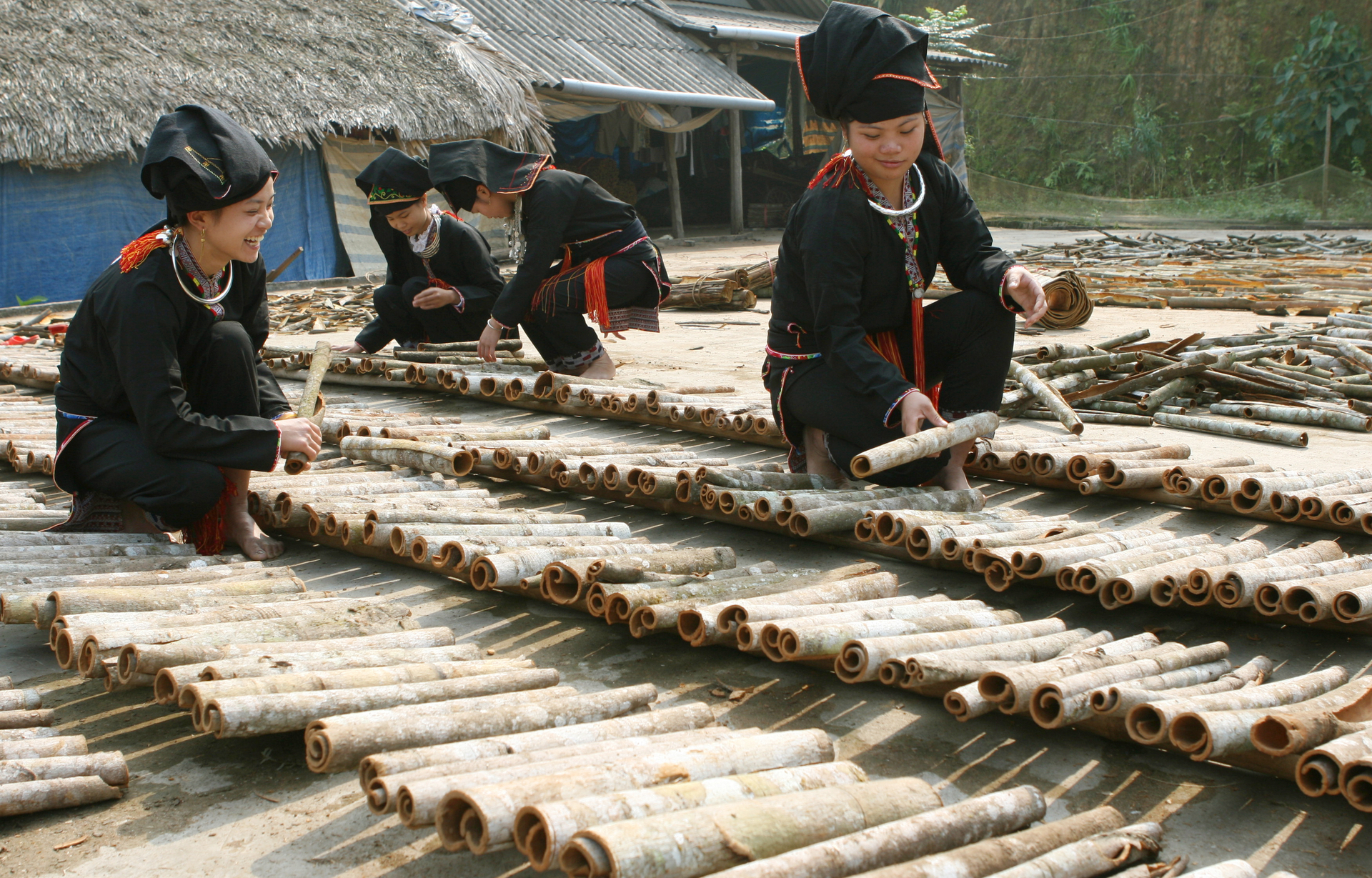

In recent times, Van Yen district has mobilized people to grow cinnamon in each concentrated area and produce organically, and directed people to do green agriculture. This aims to build a brand for raw material areas and expand consumption markets.
Mr. Pham Hong Thang, Director of the Agricultural Development and Support Services Center in Van Yen district, said that the Center has directed the team of grassroots agricultural extension officers to coordinate with local government to well perform the work of disseminating, advocating, training, and transferring technical advances in cinnamon production from the stages of nursing seedlings, planting, caring for, harvesting, and processing products. At the same time, mobilize people to produce cinnamon in an organic and sustainable direction.
The Center has coordinated with some units and businesses, such as NEDSPICE Binh Duong Co., Ltd., the Forest Protection Research Centre under the Vietnamese Academy of Forest Sciences, and the Yen Bai Agricultural Extension Center, to organize 12 training classes with nearly 1,000 people and train 235 household groups on sustainable cinnamon production techniques in an organic direction, linking the production, processing, and consumption of cinnamon products.
Thereby, helping cinnamon producers gradually grasp and well apply knowledge to actual production, such as techniques for planting, caring for, harvesting, processing, and preserving cinnamon products; increasing the use of organic fertilizers, microorganisms, and biologically derived pesticides; and limiting chemical fertilizer without using herbicides.
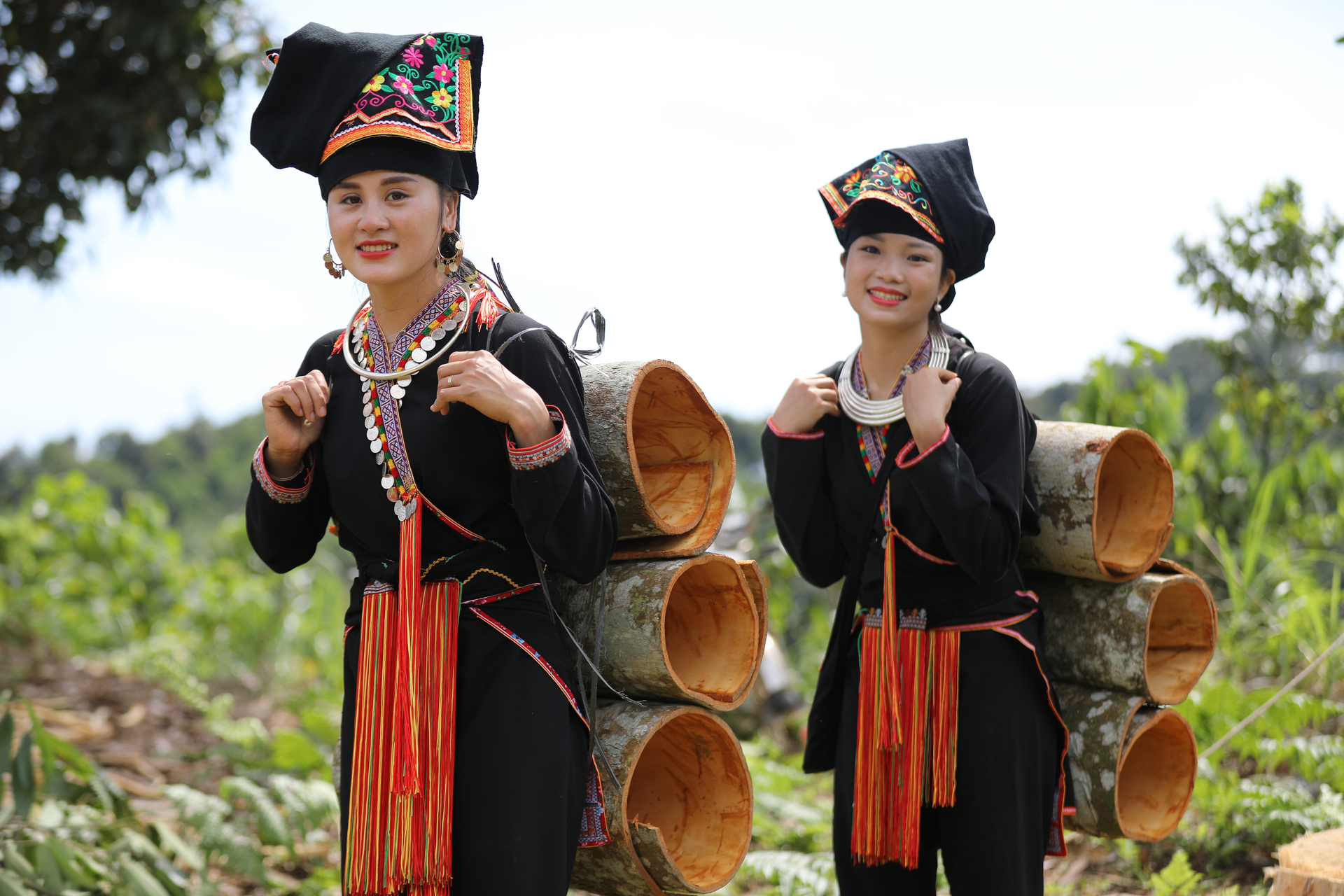
Ms. Pham Thi Quy (Khe Co village, An Thinh commune, Van Yen district) shared that her family has 5 hectares of cinnamon registered to participate in the organic cinnamon growing project of Olam Vietnam Company. Previously, her family as well as local people grew cinnamon from seeds, selected varieties based on experience, applied fertilizer according to estimates, and used chemical pesticides to prevent pests.
In the past, cinnamon products in Van Yen were almost only exported to the Chinese market. But when realizing that domestic consumption power is highly increasing and the European and American markets have a large demand for buying cinnamon products at higher prices, businesses such as Son Ha Spice Flavorings Co., Ltd., Olam Vietnam, Vicimex, etc., together with people, have formed and expanded the organic cinnamon-growing area.
Mr. Doan Anh Khoi (Olam Vietnam Company) said: "Van Yen cinnamon has always been a very famous brand. We highly appreciate the quality of cinnamon here, especially in terms of output and quality of essential oil. Our company exports products to many countries around the world, and Van Yen cinnamon is now contributing 70% of the raw materials for production. Currently, the company is continuing to introduce Van Yen cinnamon sticks and cinnamon powder to supermarket chains in America and Europe."
With the economic value brought by cinnamon trees, Van Yen district is promoting the development of cinnamon trees, especially expanding the organic cinnamon area. The change in production method from small-scale to organic production not only helps the productivity, quality, and value of cinnamon products in Van Yen increase sharply but also helps the locality reduce environmental pollution, protect natural water sources, and ensure community health.
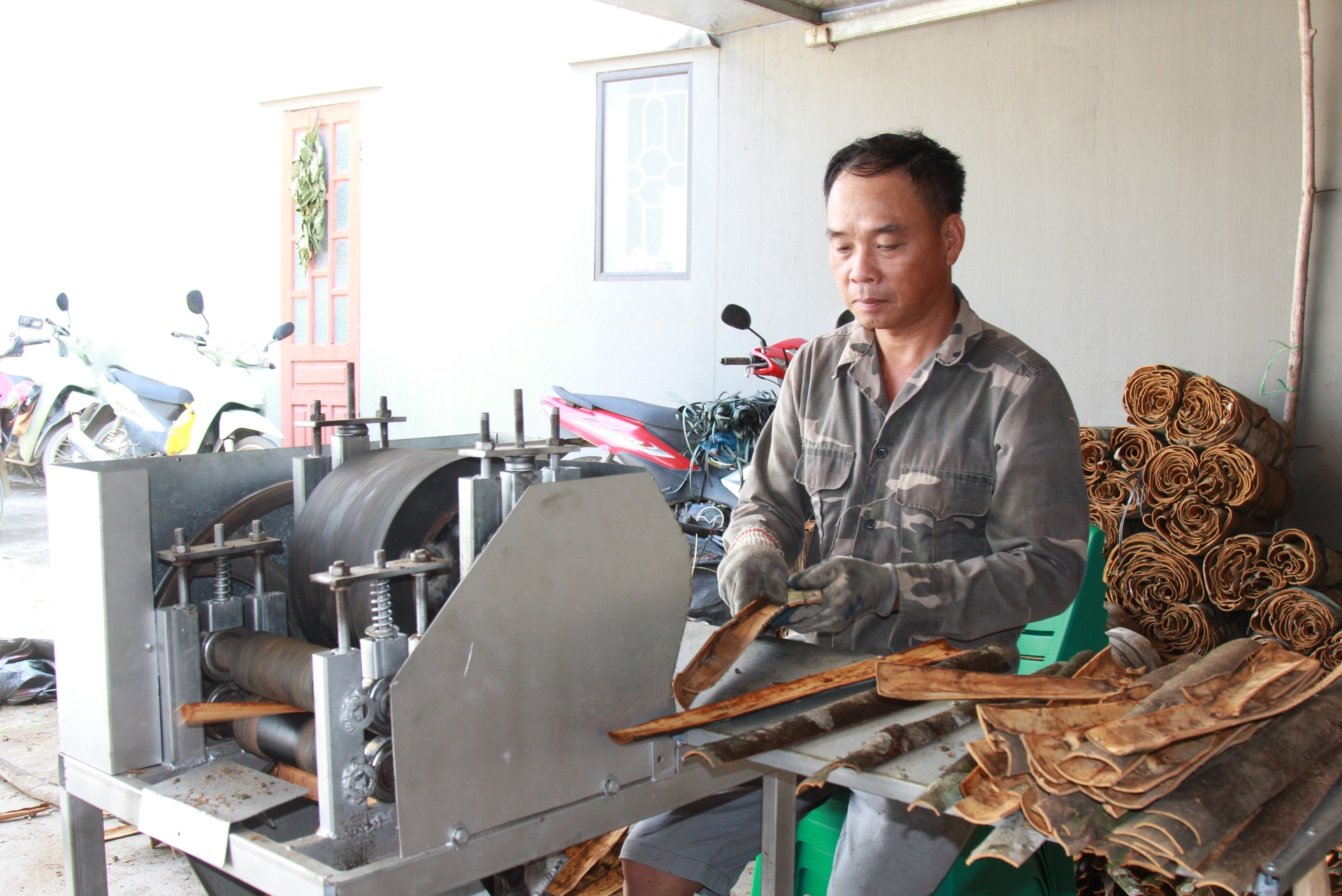
On average, each year, Van Yen district exports to the market about 6,000 tons of dried cinnamon bark of all kinds, takes advantage of over 65,000 tons of cinnamon branches and leaves and more than 50,000 m3 of cinnamon wood, and distills 300 tons of cinnamon essential oil. Total revenue from cinnamon products reaches over VND 800 billion/year. In addition, cinnamon trees also create jobs for thousands of local workers.
In addition, the district pays great attention to promoting the Van Yen Cinnamon brand, promoting trade activities, and investing in growing, processing, and trading cinnamon products. In particular, since 2016, the district has organized the Cinnamon Festival four times to introduce and promote the image of Van Yen cinnamon, attract businesses to invest in the deep processing of cinnamon products, and promote the development of the cinnamon product value chain.
As of now, the district has over 60 establishments purchasing and pre-processing cinnamon bark products on a large scale; 21 facilities producing and distilling cinnamon essential oil, including 11 factories with 12 modern production lines; and 10 private households with manual distillation.
Mr. Luu Trung Kien, Vice Chairman of the Van Yen District People's Committee, said: To enhance the value of the cinnamon tree, the district focuses on building products that meet OCOP standards. Up to now, the entire district has more than 40 OCOP products, including 17 cinnamon products certified as 3-star OCOP products.
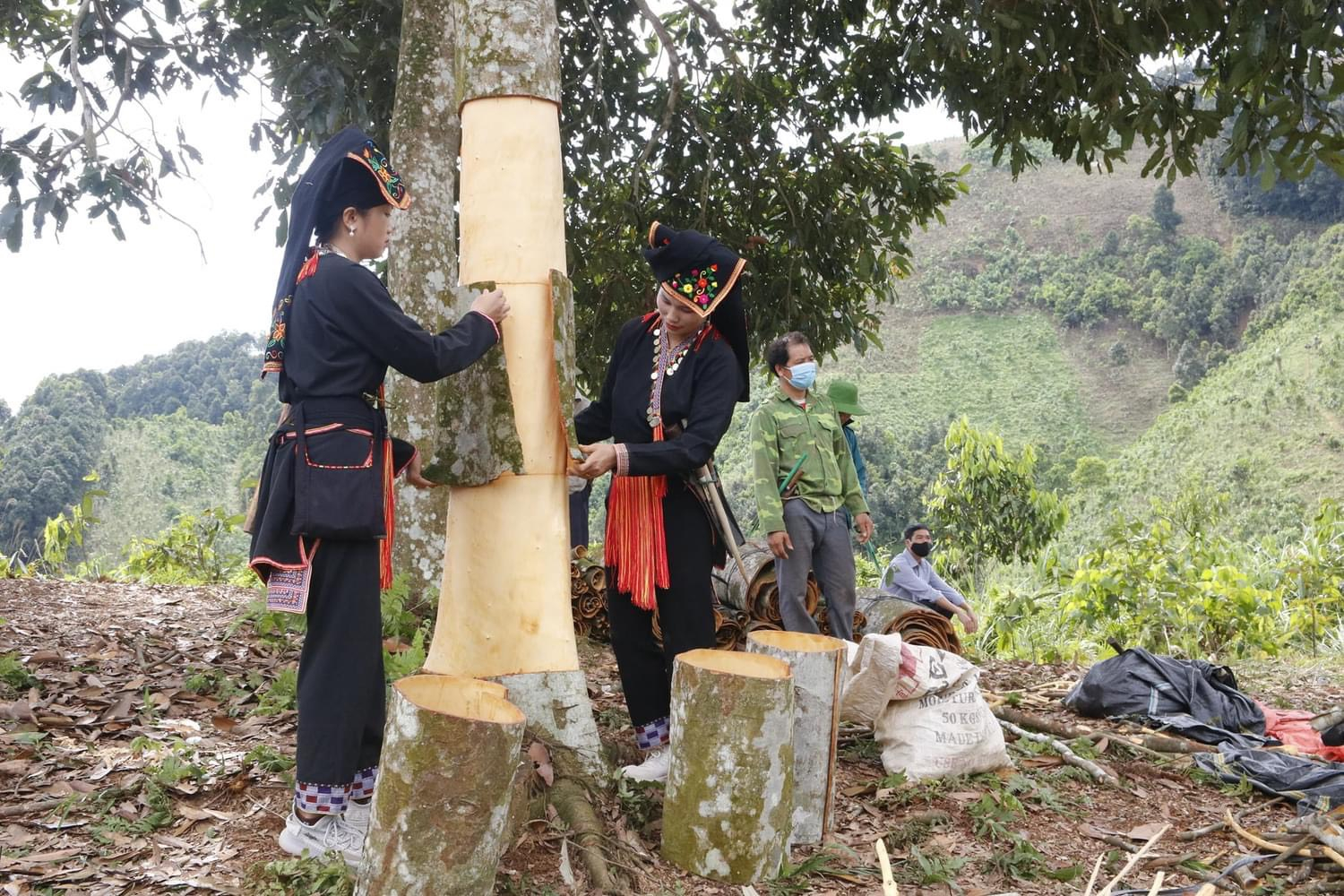
Mr. Ha Duc Anh, Chairman of the Van Yen District People's Committee, said: The district has been focusing on building areas specializing in cinnamon trees, mainly on communes that have been granted geographical indications, and focusing on producing organic and clean cinnamon products. At the same time, continue to introduce, promote, and participate in investment and export promotion programs for cinnamon products organized by authorities.
Well control seed supply; apply science and technology to farming, preventing and controlling pests and diseases in cinnamon; and well control cinnamon output products to ensure the maintenance of the Van Yen Cinnamon brand.
Cinnamon bark and essential oil products are produced and consumed according to orders from domestic and foreign customers. The domestic consumption market is mainly in Bac Giang province and Hanoi city. Especially, cinnamon products have well met the requirements of export markets such as Taiwan, China, South Korea, Japan, India, Bangladesh, Egypt, America, the UK, the Netherlands, etc. In addition, cinnamon wood is purchased by establishments and cooperatives to produce rotary veneers, packaging, and pallets, which are exported mainly to Taiwan and China.
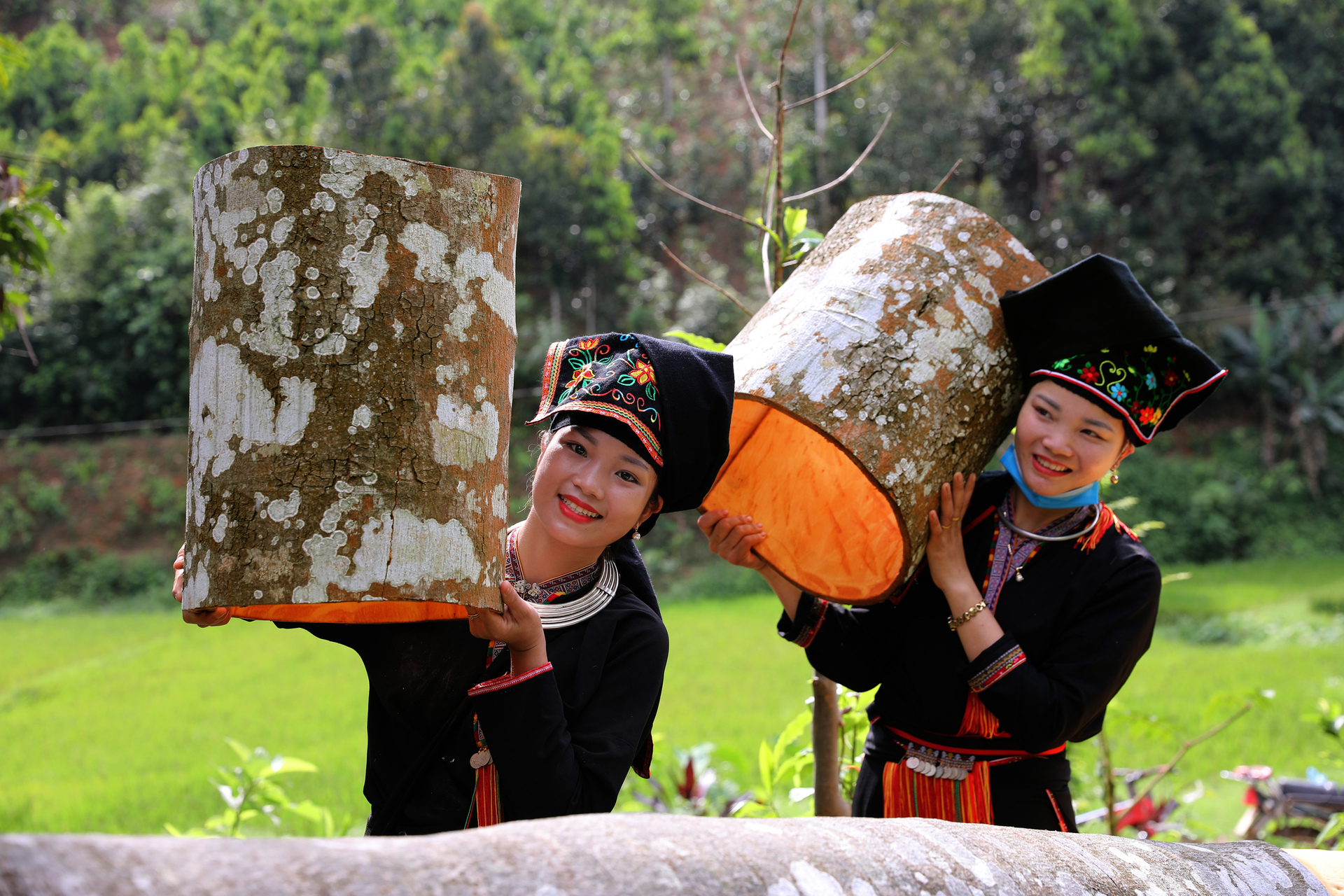
Content: Thanh Tien - Hoang Anh
Photo: Thanh Tien
Translated by: Huyen Vu Thu


